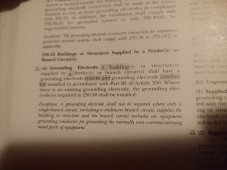zanydroid
Solar Wizard
I thought I posted this a few messages back (#71 now that I went back and searched). Make sure to not double tap the lug unless it's explicitly listed for multiple grounds.Hmmm...I didn't honestly think about that. Seems far too obvious honestly. I know that if I do that, or whatever I'm "supposed" to do, it won't make a bit of difference to the grounding I already have in place. If it gets this guy off my back, then I may just do it. Thanks for the suggestion! I have tons and tons of ground wire laying around
I don't know if it's your working/communications style, or fluster from unexpected issue coming up. But you seem to be overreacting / somewhat all over the place.
If you follow the canonical advice being given here (and I would suggest that you collate and organize it on your side, perhaps give a periodic text snapshot of written notes or screenshot of visual notes), then you probably will only get 1-4 minor notes from the inspector across 1-2 more return trips. You could also post back here with incremental progress pictures to confirm that you are following the golden path. When I do these projects as an owner-builder I really do not want to put more work on the inspector than they have to for a contractor.
The first time I had an electrical inspector it was embarrassing, I didn't have all the tools & papers ready, and they only budget 15 min per house... Plus they have a quirk where they want you to torque specific terminals. That was an instant fail and kind of unhappy afternoon, but I passed after the following one.
Compared to those of us that front-loaded the code research before buying or cutting anything, you're probably doing comparable amount of work, except you deferred it and are now catching up. So it's not a big deal. Based on what I saw you're not out that much $$ except maybe those IMOs and some conduit fittings. You're not in a true horror story like being forced to rip up buried conduit.




